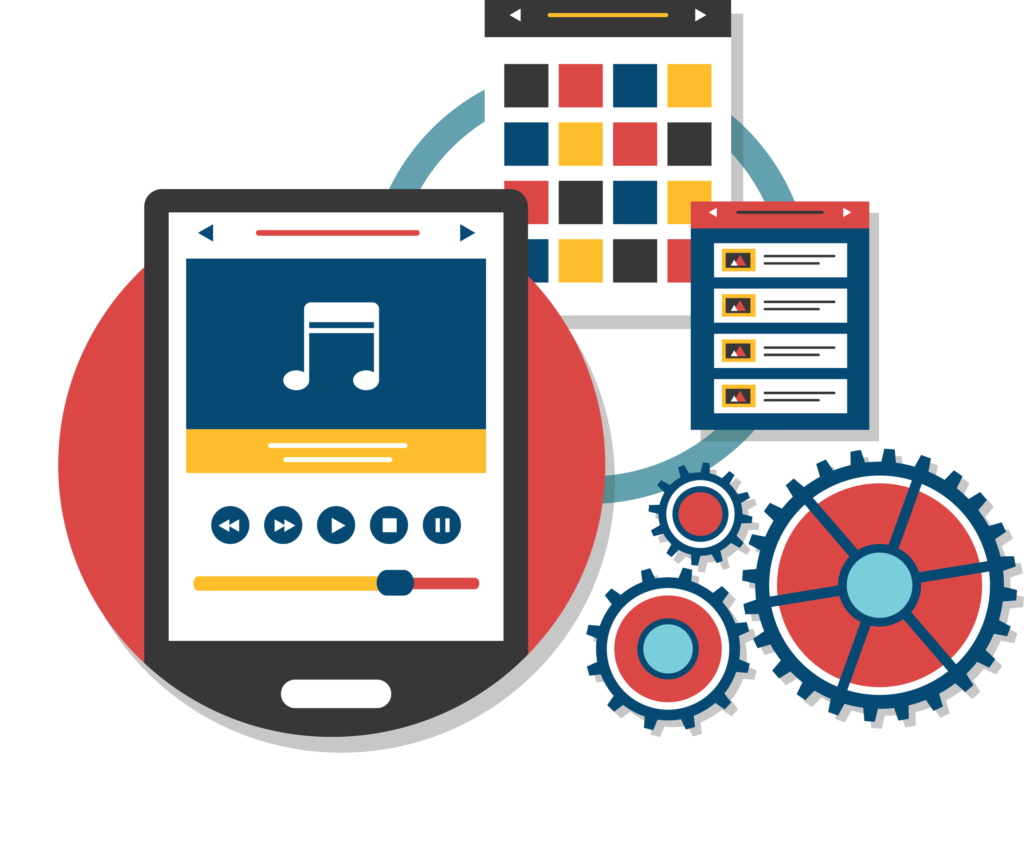
In today’s digital world websites are a tool used by most businesses.
But having a website isn’t enough.
Once you start generating traffic you need to convert those website visitors into paying customers, email subscribers and engaged followers.
This is where Conversion Rate Optimization (CRO) comes in.
In this blog post I want to delve into the exciting world of CRO and give you the knowledge and strategies to turn your website into a conversion machine!
Here is what you’ll learn:
- What is CRO and why is it important?
- The CRO journey: Understanding your conversion funnel
- Essential CRO tools and techniques for success
- A/B testing: The science behind making better choices
- CRO best practices
- The future of CRO: Trends to watch
What is CRO and Why is it Important?
Conversion Rate Optimization (CRO) is the process of improving the percentage of people who take a desired action when they land on your website or sales funnel.
This action could be making a purchase, signing up for your newsletter and becoming a lead or registering for a webinar.
Why is CRO important?
Real simple,it directly impacts your bottom line.
By optimizing your website for conversions, you can:
- Increase sales and revenue
- Generate more qualified leads
- Boost customer engagement
- Improve brand loyalty
- Reduce marketing spend and get a higher return on investment (ROI)
The CRO Journey: Understanding Your Conversion Funnel
Think of your website as a funnel. Visitors enter at the top, and ideally, a good portion of them will convert at the bottom.
The conversion funnel outlines the steps visitors take on your website, from initial awareness to final action.
Identifying these stages is crucial for crafting an effective CRO strategy.
Here’s a breakdown of a typical conversion funnel:
- Top of the Funnel (TOFU): This stage focuses on attracting visitors. You’ll use content marketing, SEO, social media, and other strategies to build brand awareness and drive traffic to your website.
- Middle of the Funnel (MOFU): Once visitors arrive, you need to engage them, educate them about your products or services, and nurture them. This involves publishing compelling content, having clear calls to action (CTAs), and offering lead magnets like ebooks or webinars.
- Bottom of the Funnel (BOFU): Here’s where you focus on conversions. Visitors are ready to take action, so optimize your checkout process, landing pages, and sales presentations to make conversions seamless.
Essential CRO Tools and Techniques for Success
Now that you understand the conversion funnel, let’s explore the tools and techniques that will help you optimize it:
- Website Analytics: Tools like Google Analytics provide valuable insights into user behavior on your website. You can track user journeys, identify bottlenecks, and measure the effectiveness of your CRO efforts.
- Heatmaps: Heat maps show where users click, scroll, and spend their time on a webpage. This helps you understand user engagement and identify areas that need improvement.
- Session Recordings: Watch actual user sessions to see how visitors interact with your website. This can reveal confusing elements, unclear navigation, or frustrating user experiences (UX).
- A/B Testing: This allows you to compare different versions of a webpage (e.g., headlines, CTAs, layouts) to see which one performs better in terms of conversions.
- Landing Page Optimization: Create high-converting landing pages with clear, concise messaging, compelling visuals, and strong CTAs.
- Form Optimization: Make your forms user-friendly by minimizing fields, reducing friction, and ensuring mobile responsiveness.
A/B Testing: The Science Behind Making Better Choices
A/B testing is a critical CRO technique. It allows you to experiment with different design elements on your website to identify the ones that drive the highest conversions.
Here’s the basic process:
- Define your hypothesis: What do you want to improve? More leads? Higher sales and more customers? More engagement?
- Choose your variables: What element will you test (headline, CTA button color or image)?
- Create two (or more) versions: Develop different variations of the webpage element you’re testing.
- Run the test: Split your website traffic equally between the variations.
- Analyze the results: Use analytics data to see which variation performs better.
- Iterate and improve: Based on the results, double down on the winning variation and continue testing to further optimize your website.
Conversion Rate Optimization Best Practices
- User Experience (UX) is king: Create a seamless user experience. Make your website’s navigation easy and clear for your visitors, content easily readable and free of spelling and grammar erros, and the overall design visually appealing.
-
-
Understand Your Audience:
- Develop detailed buyer personas to understand your target audience’s needs, preferences, and pain points.
- Use analytics and user research to gain insights into their behavior and journey.
-
-
-
Set Clear Conversion Goals:
- Define specific and measurable conversion goals aligned with your business objectives.
- Track key performance indicators (KPIs) to monitor progress and evaluate success.
-
-
-
Optimize Your Website Design:
- Create a visually appealing and user-friendly website.
- Make sure your website is easy to navigate.
- Optimize page load speed for a faster user experience.
-
-
-
Craft Compelling Copy:
- Craft clear and persuasive sales copy that resonates with your target audience.
- Highlight benefits,features and value propositions.
- Write compelling headlines and subheadings.
-
-
-
Optimize Your Call to Action (CTA):
- Use strong and action-oriented CTAs (Buy Now,Subscribe,Download)
- Create a sense of urgency or scarcity when appropriate.
- Test different CTA placements, colors, and button copy.
-
-
-
Leverage Social Proof:
- Display customer testimonials, reviews, and ratings.
- Showcase customer success stories.
- Highlight the number of users or customers.
-
-
-
Build Trust and Credibility:
- Display trust badges, security seals, and privacy policies.
- Clearly communicate your company’s values, mission and backstory
- Provide high-quality content and resources.
-
-
Personalize the User Experience:
- Use data to tailor content and offers to people’s individual preferences.
- Implement personalized recommendations or product suggestions.
- Create segmented email campaigns based on user behavior.
-
Optimize Your Mobile Experience:
- Ensure your website is responsive and mobile-friendly.
- Optimize page load speed for mobile devices.
- Simplify forms and navigation for mobile users.
-
Test and Iterate:
-
-
-
- Conduct A/B and multivariate tests to compare different variations of your website.
- Analyze test results to identify winning combinations.
- Continuously refine and optimize based on the data.
-
-
The Future of Conversion Rate Optimization: AI-Driven and Customer-Centric
The future of CRO will be intertwined with the rapid advancements in technology, particularly Artificial Intelligence (AI).
In the future CRO will become increasingly data-driven, personalized, and customer-centric.
AI and Machine Learning Dominance:
-Predictive analytics: AI will predict customer behavior, allowing for highly targeted and personalized experiences.
-Automation: Routine CRO tasks like A/B testing and data analysis will be automated, freeing up time for marketers so they can focus on more higher valued business activities
-Personalization: AI-powered recommendation engines will deliver tailored content and offers to individual users.
-Customer journey mapping: A deep understanding of customer behavior will enable hyper-personalized experiences at every touchpoint.
-Real-time personalization: Dynamically adjusting website content and offers based on real-time user data.
Ethical AI and Privacy:
-Transparent AI: Businesses will need to be transparent about AI usage and data collection to build trust.
-Privacy compliance: Businesses of all sizes will have to strictly adhere to data privacy regulations like GDPR and CCPA.
Augmented Reality (AR) and Virtual Reality (VR):
-Enhanced product experiences: AR and VR will be able to provide immersive product demonstrations which wil in turn increase conversion rates.
-Virtual try-ons: Customers can virtually try on products over the internet before purchasing, reducing return rates!
-Customer-centric design: Creating websites and experiences that prioritize user needs and satisfaction.
-Feedback loops: Continuously gathering and acting on customer feedback to improve conversions.
Challenges and Opportunities:
While the future of CRO is promising, it also presents challenges.
Businesses will need to invest in AI expertise and consulting and have the right data infrastructure in place.
Those businesses who embrace and adapt to the trends in AI and CRO will have a significant competitive advantage in the marketplace!
Conclusion
Conversion rate optimization (CRO) is a big part of any successful online business.
By understanding your target audience, conducting proper market research, and implementing the correct CRO strategies, you can significantly increase the number of visitors who take the desired action on your website or sales funnel.
What CRO strategies are getting you results in your business? Let us know in the comments below!




